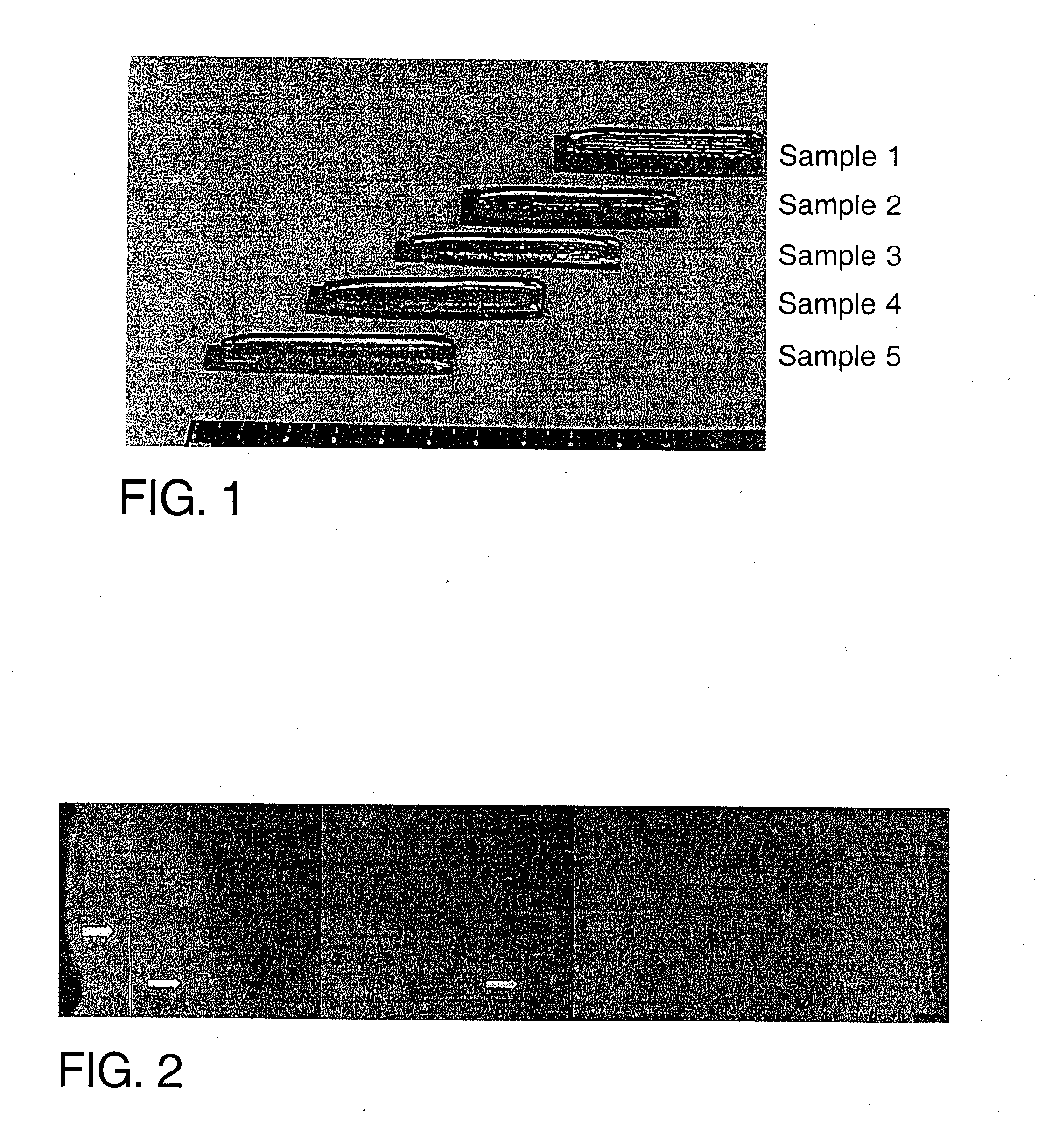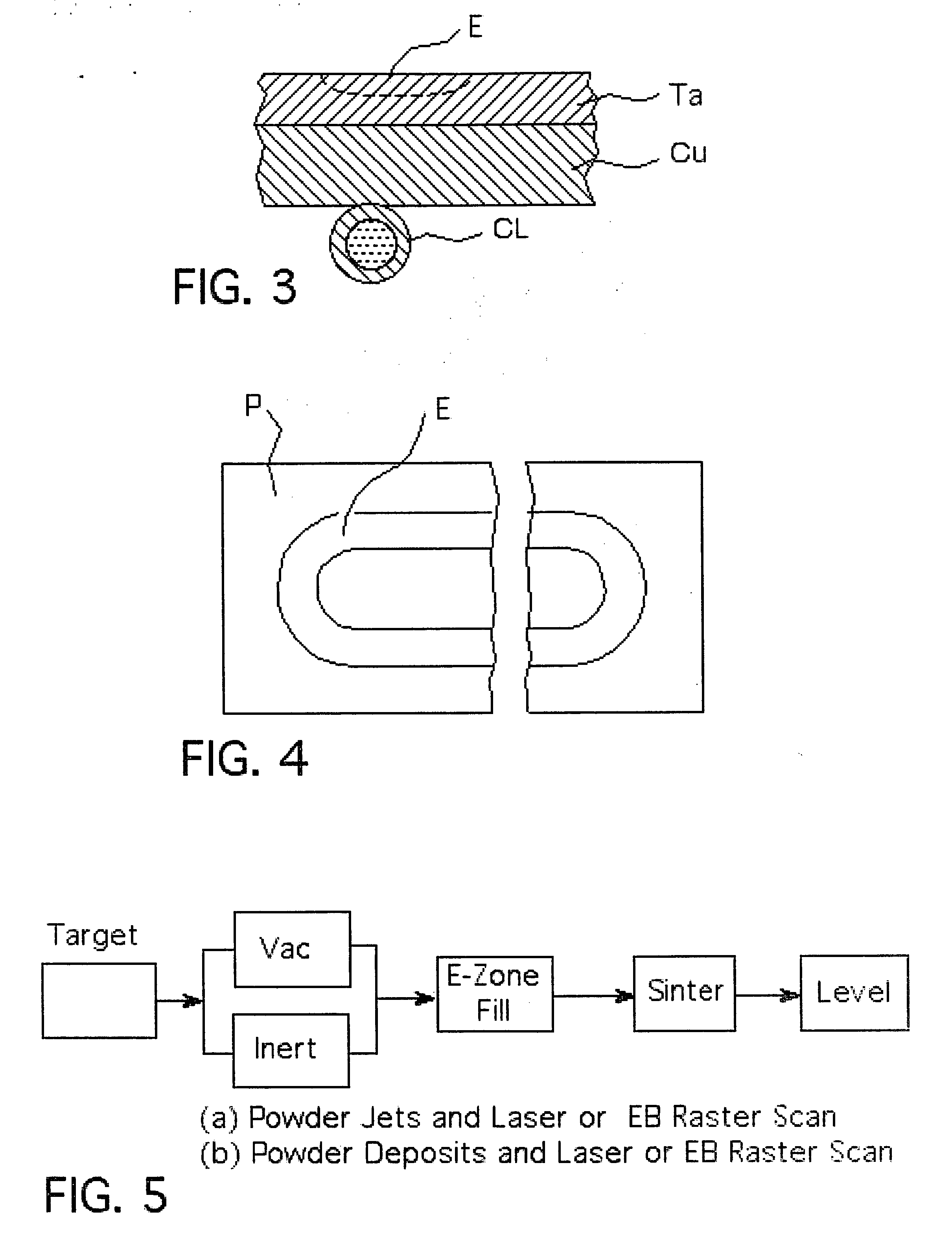Refractory metal and alloy refining by laser forming and melting
a technology of refractory metal and alloy, which is applied in the direction of vehicle route interaction devices, railway components, nuclear engineering, etc., can solve the problems of consuming a significant amount of furnace time, and slowing down the overall process. , to achieve the effect of reducing the cycle tim
- Summary
- Abstract
- Description
- Claims
- Application Information
AI Technical Summary
Benefits of technology
Problems solved by technology
Method used
Image
Examples
Embodiment Construction
[0029] An embodiment of the present invention is a laser process to produce high purity refractory metal and alloys formed from refractory metal powder. The tantalum powder (−120+325 mesh), and a tantalum plate substrate applied in a depositing apparatus as described in U.S. Pat. No. 6,269,536, incorporated herein by reference in its entirety). The laser energy was approximately 17 kW delivered. FIG. 1 shows the five deposits formed from the laser process. Each deposit is the result of approximately five to seven layers with each layer being approximately 0.010″ thick.
[0030] The physical property differences described above also meant the deposition rates had to be much lower than for titanium. The higher melt temperature and thermal conductivity of tantalum compared to titanium meant the tantalum molten pool was probably smaller and a smaller quantity of powder could be melted by the available laser power.
[0031] Table 1 shows the results of the chemical analysis (GDMS) of the sta...
PUM
| Property | Measurement | Unit |
|---|---|---|
| Fraction | aaaaa | aaaaa |
| Fraction | aaaaa | aaaaa |
| Fraction | aaaaa | aaaaa |
Abstract
Description
Claims
Application Information
 Login to View More
Login to View More - R&D
- Intellectual Property
- Life Sciences
- Materials
- Tech Scout
- Unparalleled Data Quality
- Higher Quality Content
- 60% Fewer Hallucinations
Browse by: Latest US Patents, China's latest patents, Technical Efficacy Thesaurus, Application Domain, Technology Topic, Popular Technical Reports.
© 2025 PatSnap. All rights reserved.Legal|Privacy policy|Modern Slavery Act Transparency Statement|Sitemap|About US| Contact US: help@patsnap.com



